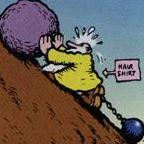David Heath
Posts: 3274
Joined: 3/29/2000
From: Staten Island NY
Status: offline

|
Well guys its a little late but its done. Please read how to get the patch from us. The patch is only 1.75 Megabytes. We know some of you have had some issues downloading the patch. Please try using True Update first, if that does not work try our FTP server
Host: ftp.matrixgames.com
Port: 21
Login: anonymous
Password: Your Email Address
Then try Matrix download page
Please report any problems and any good news here. I will not be checking the forums a good few hours.
Now what made it into v2.10
UNCOMMON VALOR PATCH ITEMS VS. 2.10
1) Security requirement for restarting the game, before PBEM combat resolution or VCR playback was not well received. This requirement has been removed. Other security measures, such as file encryption, have been instituted in place of a restart. These measures should be user-transparent. Just play normally. Security should be valid and VCR playbacks should be accurate. Please note that in a game started in an earlier version, there may be some problems with the VCR for the first turn played with this build.
2) Fixed extraneous message indicating ships were arriving in theater, when they were not.
3) Right clicking on a task force should no longer lock up some machines.
4) Load and save routines have been optimized for speed.
5) Play by email games should no longer auto-save in slot zero.
6) Combat pilot rotation for missions should now allow more inexperienced pilots to fly, by grounding highly fatigued pilots. Group commanders will still try to use the most experienced pilots available for combat missions. For patrol, ASW and training missions, pilots with fewer missions flown now have priority over more experienced pilots. This will allow the player to put a group on training mission and train up rookie pilots.
7) When air groups transfer to a new base, they now try to take adequate with them to fly the aircraft transferred.
8) New phase added to the game called the “Pilot Assignment Phase”. This occurs at the beginning of each game and at the end of each day. It checks all ready aircraft on the map, to insure a pilot is available for the operations, on next air phase. Although some groups may have more pilots than needed, all should now at least the minimum needed to fly ready aircraft.
9) The screen in which groups transfer to new base now includes the total aviation support of the listed bases.
10) New naval and air-to-air combat sounds have been added.
11) Rewrote code that allocates ship damage to better reflect distinctions between various armaments and hit locations. Players should find deck hits; tower hits and turret hits do less floatation damage, while doing more fire and system damage. Torpedoes should now do less fire and system damage and more floatation damage.
12) Rewrote naval combat code to allow for surprise attacks. Combat Japanese task forces that have ships mounting the Long Lance torpedo will now try to sneak up and surprise attack with a volley from every able ship, then retire to reload, before normal combat occurs. Combat Japanese task forces that do not contain ships with the Long Lance torpedo and combat Allied task forces may also make surprise attacks, gaining a free round of combat, firing limited shots, before normal combat occurs. To make a gun surprise attack, the side attacking must make skill rolls to properly line up the ships and coordinate fire, and radar or spotting rolls, while the other side fails the radar or spotting rolls. To make a Long Lance attack, the Allied side must either fail a radar or spotting roll or fail a skill roll (required to turn into the torpedoes) and the Japanese side must make skill rolls to line up the ships in proper formation and coordinate the attack. Surprise attacks can be devastating for the surprised task force sometimes and sometimes of little value, depending on a lot of skill rolling. Be sure to have at least one ship with good night experience and one with good day experience in every combat task force, along with a leader with the best naval skills you can muster.
13) When a carrier task force is assigned to follow another task force and ordered not to react to enemy task forces, the task force should no longer close range by one hex, if it spots an enemy carrier task force. This will allow the player to move a carrier task force with some other task force, such as a transport task force, and the carrier CAP will also provide area CAP to the other task force.
14) When a task force achieves a T-crossing in naval combat, it is now awarded a to hit bonus against ships of the enemy task force. This is in addition to the extra shots the player normally gains from crossing the T.
15) New messages have been added to the naval combat screen.
16) New routine checks submarines on a patrol mission and under player control at the end of each turn. If the submarine is low on fuel or out of torpedoes, the submarine will automatically return to home base. This cannot be over-ridden by the player. Since the option to return has been placed in the hands of the ship’s skipper, the player should base the submarine out of the closest base to the area where the player will have the ship operating to avoid wasting significant amounts of fuel going to and coming from station. Also note that the routine is not fool proof. It is still possible to run out of fuel with a high-speed chase right before the submarine would return to base or by taking battle damage and leaking a large amount of fuel. Bingo is defined by the routine as fuel needed to return to base x 1.5. This should leave adequate fuel to return, even if harassed by aircraft on the way home. Note that submarines on special operations missions, such as transport or mine lying do not undergo the check.
7) General weather report has been added to the combat reports screen.
8) New file naming system has been added, that allows the user to see game comment in the Windows file directory. See notes on use.
9) Chances for a minesweeper (MSW) or fast minesweeper (DMS) hitting a mine, when on mine sweeping mission, have been greatly reduced.
10) Added mine depot in Brisbane.
11) Destroyers (DD), Destroyer Escorts (DE), Patrol Gunboats (PG), Patrol Craft (PC) and Destroyer Transports (APD) have been given very limited, ad hoc, mine destruction abilities. Each can locate and destroy a few mines by shooting them, if the crew makes the proper experience rolls and spot other mines, as well. This awareness of the minefield will allow the task force entering the minefield to be hit by fewer mines. This ability only applies in cases where the task force of which they are apart in danger of hitting mines and if that task force is traveling less than 7 hexes that turn.
12) Minefield rules have been rewritten. All task forces a small chance to stumble into minefields in enemy base hexes. A somewhat greater chance to hit the minefield occurs if no base is located in the hex, but as these mines are more spread out, the chances of an individual ship hitting a mine are lessened. Transport and fast transport task forces with that enemy base as a destination have a much greater chance to hit the minefield, since they come closer to the shoreline and or port, where most mines are situated. The chances of hitting friendly mines placed in a hex without a friendly base, offensive mines, have been reduced. Additionally, the chance of hitting mines in deep water and enemy mines at ones own base have been increased, slightly. Note that due to small minesweeping boats not detailed in the game, task forces at friendly, larger ports now have less chance of hitting enemy mines than at friendly, smaller ports.
13) Aircraft resistance to anti-aircraft artillery has been increased, in general.
14) Torpedo and dive-bombers, specifically, are now more resistant to anti-aircraft artillery.
15) Long range combat air-patrol penalty values have been decreased, slightly. The penalty values for LRCAP flying over carrier task forces not in the hex of the home base are still severe, as these groups usually maintain radio silence.
16) The air-to-air combat system has been rewritten. Messages referring to aircraft flights have been replaced by individual aircraft dogfight messages. Squadron messages remain. The calculations revolving around pilot fatigue, disruption and weapons platforms accuracy have been modified, which should produce a bit higher number of damaged and destroyed planes in dog fighting and attacks on bombers. New rules for attacking aircraft using deflection firing and firing from behind have been added.
NOTES TO PLAYERS:
Air to Air Combat: Climbing to intercept means the climb rate of the interceptor is inadequate and it is at a disadvantage. Intercepting means the interceptor is trying to locate and attack with no penalty. Area CAP intercepting means the defending group is not close to the enemy and is trying to regroup, find the enemy and attack at a disadvantage. Due to radio silence, long-range combat air patrol over a friendly aircraft carrier task force is at a still greater disadvantage. Bombers too high means the interceptor cannot climb high enough, fast enough to engage the enemy bombers. Climbs towards bombers means the climb rate of the interceptor is inadequate and it is at a disadvantage. Dives on bombers means the interceptor has altitude and speed is at an advantage. Attacks bombers means the interceptor is trying to locate and attack with no penalty. In this game, Bogie is an unidentified enemy aircraft that is spotted, but too low a detection level to identify. Bounced means surprised and at a disadvantage. Evades means the evading aircraft being attacked was too fast or maneuverable to shoot at. Engaging means two aircraft are maneuvering to fire at one another and the first aircraft listed is at a slight advantage. Turning back means elements of the bombing group are too damaged to continue the mission trying to evade enemy fighters and return to base. Breaking off attack means that elements of the fighter group are out of fuel or ammunition or are too damaged to continue and are trying to evade and return to base. Firing at range indicates that the aircraft is deflection shooting at the given range times 100 yards. Firing from behind indicates the firing aircraft is directly behind the enemy aircraft and the victim has no rear firing guns that can bear, which gives the attacker an extra burst at good odds. Although all the CAP for a hex shows up on the combat screen, some of these planes may not know where the battle is or be close enough to engage, such as the Japanese CAP in the battle of Midway, which was out of position, when the American dive bombers attacked. Additionally, each aircraft has a detection level (which is modified by weather, skill rolls, the number of planes it has engaged and other factors), and a small group of planes can sometimes slip past CAP or only have to engage a few enemy planes, before it can reach the target.
Saved Games: Campaigns that were started with version 2.0 or earlier can be played with version 2.10. There may be some bugs, however, caused by database changes and the first turn in version 2.10 may have some problems. The VCR replay for the first turn played in the new version may have errors. After that, everything should be ok.
To convert old files to the new format, used in version 2.0, you just need to rename them.
1) The autosave in slot zero should be renamed uv000_autosave.uvs
2) The combat vcr replay in slot one should be renamed uv001_combatsave.uvs
3) The other files should be renamed, using the following convention:
uvxxx_scen.uvs where xxx is the slot number
This will cause the saved game to show up in the saved game list of the game. You should then load the game with some meaningful comment. When you look in the saved game folder, you will see the game you saved, with the slot number and the comment you assigned, such as:
UV004_Carrier Battle.UVS
this should aid in saved game management.
|
 Printable Version
Printable Version














 New Messages
New Messages No New Messages
No New Messages Hot Topic w/ New Messages
Hot Topic w/ New Messages Hot Topic w/o New Messages
Hot Topic w/o New Messages Locked w/ New Messages
Locked w/ New Messages Locked w/o New Messages
Locked w/o New Messages Post New Thread
Post New Thread